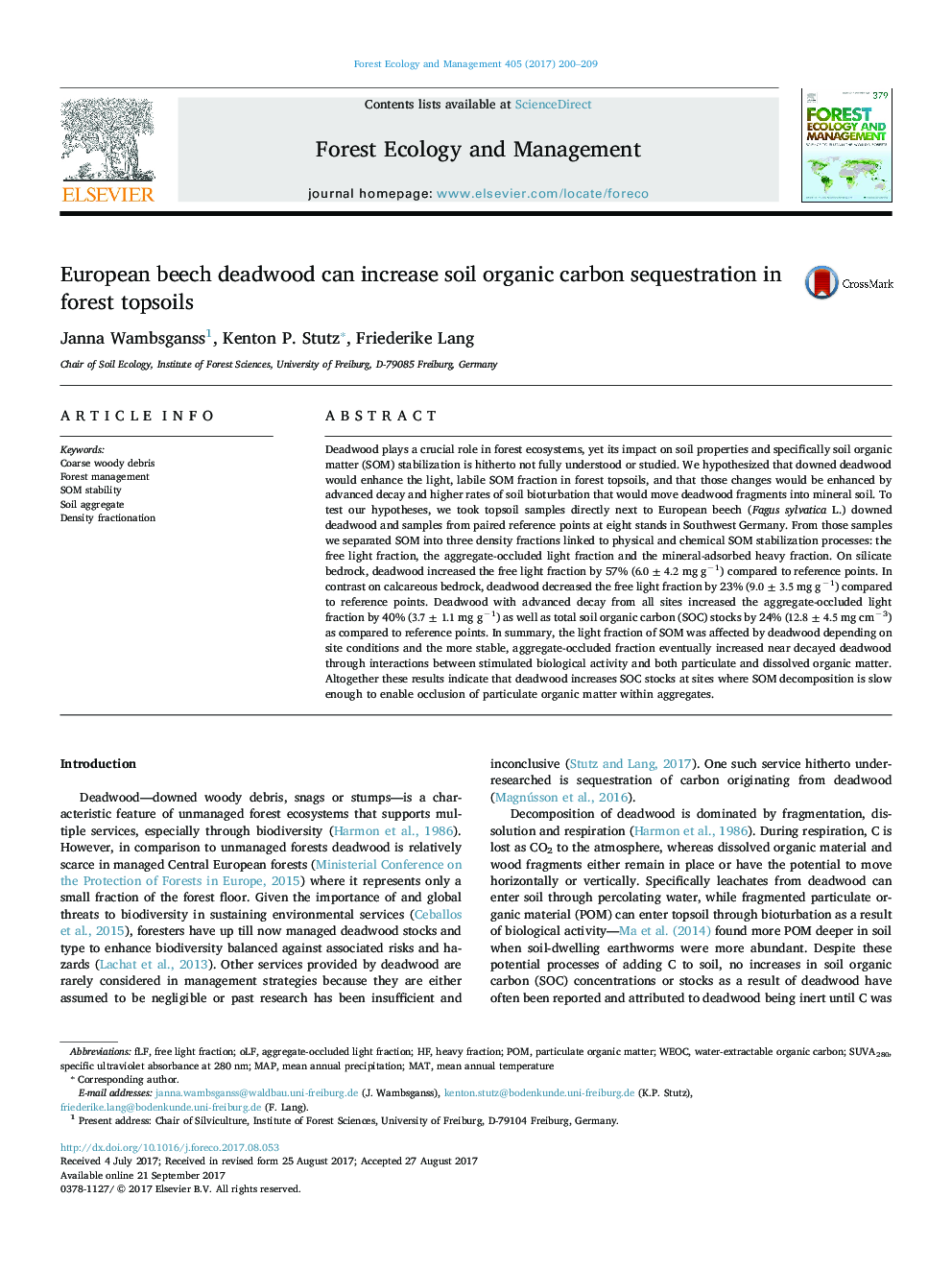| Article ID | Journal | Published Year | Pages | File Type |
|---|---|---|---|---|
| 6459071 | Forest Ecology and Management | 2017 | 10 Pages |
â¢On silicate bedrock deadwood increased free particulate OM.â¢On calcareous bedrock deadwood decreased free particulate OM.â¢Advanced decayed deadwood increased occluded particulate OM and total SOC stocks.â¢Managing deadwood to store SOC should consider decay class and site conditions.
Deadwood plays a crucial role in forest ecosystems, yet its impact on soil properties and specifically soil organic matter (SOM) stabilization is hitherto not fully understood or studied. We hypothesized that downed deadwood would enhance the light, labile SOM fraction in forest topsoils, and that those changes would be enhanced by advanced decay and higher rates of soil bioturbation that would move deadwood fragments into mineral soil. To test our hypotheses, we took topsoil samples directly next to European beech (Fagus sylvatica L.) downed deadwood and samples from paired reference points at eight stands in Southwest Germany. From those samples we separated SOM into three density fractions linked to physical and chemical SOM stabilization processes: the free light fraction, the aggregate-occluded light fraction and the mineral-adsorbed heavy fraction. On silicate bedrock, deadwood increased the free light fraction by 57% (6.0±4.2 mg gâ1) compared to reference points. In contrast on calcareous bedrock, deadwood decreased the free light fraction by 23% (9.0±3.5 mg gâ1) compared to reference points. Deadwood with advanced decay from all sites increased the aggregate-occluded light fraction by 40% (3.7±1.1 mg gâ1) as well as total soil organic carbon (SOC) stocks by 24% (12.8±4.5 mg cmâ3) as compared to reference points. In summary, the light fraction of SOM was affected by deadwood depending on site conditions and the more stable, aggregate-occluded fraction eventually increased near decayed deadwood through interactions between stimulated biological activity and both particulate and dissolved organic matter. Altogether these results indicate that deadwood increases SOC stocks at sites where SOM decomposition is slow enough to enable occlusion of particulate organic matter within aggregates.
